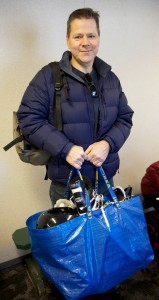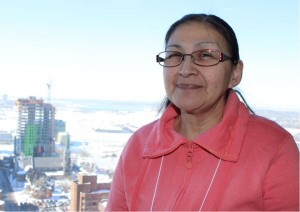The above map shows the locations of every registered AEDs in Alberta. Mapped using data from Alberta Health Services PAD program
Albertans prone to cardiac arrests might want to stay close to the big cities.
According to data published by Alberta Health Services, most of the province’s publicly accessible defibrillators are concentrated in urban centres.
Paramedic John Hein said this trend is very problematic.
“Rural locations are the most void of devices, which is the opposite of what we would want to do,” he said. “The more rural you are, the longer it’s going to take an ambulance or a fire response to get to you.”

Automated External Defibrillators, or AEDs are used on patients who have had cardiac arrests. The device checks if the person’s heart has stopped and if so, restarts the heart by delivering an electric shock through the chest.
Alberta Health Services runs the Public Access to Defibrillation program, which keeps track of all devices purchased in the province. The health authority publishes the location and status of the AEDs on their online database, but its up to the owner of the device to volunteer that information.
Hein said there have been 8,000 defibrillators sold in the province, but few of those are registered with the PAD program, let alone regularly maintained.
Audio PlayerHein said even if all the devices in the province were in active use, this would be nowhere near enough.
“I would say that’s a very small number of devices for a population of 5 million people.”
Most of the devices in the province are located in cities. Hein said Health Services has been trying to get more AED coverage in the rest of the province, but convincing people to make the investment has been a challenging at times. “There’s a bit of pushback. The communities are saying, ‘This is a health device, shouldn’t health care pay for this?’ ” Hein is also concerned how many of the devices that have been bought and go unused. “People put them into locked cabinets or behind closed doors. We’re concerned about those because if a device is needed and you don’t have the key to get into that cabinet, then the device is useless.” In other provinces, the situation is a bit different. In Manitoba, all AEDs must be registered and maintained thanks to provincial leglislation. The Defibrillator Public Access Act of 2012 required AEDs to be placed in a number of public areas, including gyms, schools, golf courses and community centres. Tammy Witko with the Manitoba Office of the Heart and Stroke Foundation said prior to the legislation, there were less than 100 defibrillators registered throughout the province. Now there are 2,800 publicly active devices and counting. Witko said the new law didn’t just enforce certain groups to invest in AEDs, it also encouraged other businesses not covered in the legislation to get involved. “People are so aware of it they are going to purchase and register them on their own,” Witko said. “We have people calling us up, like restaurants, saying ‘Why weren’t we in your legislation?’ ” Witko said even rural communities that don’t have large public areas have put in the effort to make sure they have AEDs where people need them. “They are really quite inventive in the cottage country. If they have a facility or building that everyone uses, they would choose that as the place to put their own.” Hein said Alberta has not considered any similar legislation. For now, he said health authority is focused on getting their message out about the importance of having AEDs readily available for those in need. “I think we’ve got a long ways to go as a province and as a country to get these devices as popular as fire extinguishers or smoke detectors.”

The Canadian Heart and Stroke Foundation’s guide to AED use and safety.









